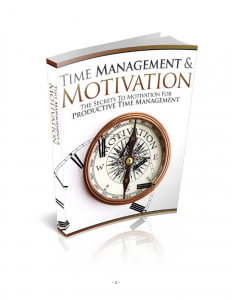
by admin | October 14, 2019 7:03 pm | Main, Success, Well Being
4 Actions That Target Your Personal Growth
We all have areas where we want to improve; health, work, family, you name it. But reality sets in along with a busy schedule that doesn’t leave any space for quite a time, let alone individual development. We also rarely have the willpower we need to see it through. Or maybe we just don’t know where or how to start.
Not being able to define your own long-term goals will end up in a life that’s devoid of meaning or direction. You start losing that spark and the motivation to get up each morning wanes.
Experts define personal growth plan as “the process of creating an action plan based on awareness, values, reflection, goal-setting, and planning for personal development within the context of a career, education, relationship or for self-improvement.”
An individualized growth plan can help you achieve the vision you have of yourself. It’s something we need to consciously think about and strive toward. If you don’t plan your own development and growth, no one else will.
Here are 4 steps you can take for a well-developed, easy-to-implement, personalized plan.
1. Know Thyself
In order to plan for the future, you have to reflect on your past experiences, your weaknesses, and strengths; they’ve made you who you are today. You also have to clarify your own unique values, such as integrity, respect for others, leadership, honesty. Your values define your stance whether it’s at the workplace, with family and friends, and in your romantic relationships. Moreover, there are several important questions you have to ask yourself:
- What do I want to become in life?
- What are my achievements up until now?
- What are my personal goals?
- What are my career ambitions?
- What steps have I taken to pursue these goals and ambitions?
2. Develop your vision
Once you’ve asked and answered these questions, you’ll have a clear vision of who you are and what you want out of life. This takes us to the second step; developing your vision. A smart tip is to provide yourself with several options to reach your next goal.
That way, if something goes wrong or you face an obstacle, you can switch to another path. Be flexible in your planning because usually, people tend to underestimate how long a certain project will take.
Another point people tend to not pay attention to is what they don’t want to do. If you’re at work, you can make a list of what-not-to-do, for example:
- Check emails as soon as they come in
- Keep too many tabs open at once
- Keep a cell phone on your desk
- Check social media while you’re working
3. Assess your present-day situation
Implementing your plan can be difficult at first. But with dedication and an eye on the prize, you’ll soon find that it becomes a daily habit. It was Jim Ryum who said, “Motivation is what get you started. Habit is what keeps you going.”
Putting your strengths to good use will harness your energy levels so that it’s utilized efficiently. You can set up milestones along the way because smaller goals give you the motivation and drive you need to get to the big ones. And each time you reach a milestone or achieve one of the small goals, reward yourself for your hard work.
4. Review your progress
Each project needs to be reviewed and assessed, and your exclusive growth plan is no different. You can do it on a monthly basis, or every couple of months, whatever feels comfortable for you. But it’s crucial that you take a step back and look at all the hard work you’ve accomplished.
Check to see if you’ve left anything out or missed any deadlines. Or maybe the mini-goals you set up last time don’t fit your criteria any longer, they need tweaking or readjusting. Reflect on your experience and consider everything you’ve learned. This will ensure that you keep moving forward according with your long-term plan and the vision you’ve set up for yourself.
On a final note, you can draw up the perfect plan but if you don’t follow through, you won’t get anywhere. Everyone needs practice to develop and grow, even if it means stepping out of your comfort zone. Having something to strive toward can renew your self-confidence and passion for life.

by admin | September 16, 2019 3:43 pm | Success
Breaking the Habit…
When you really think about it, most of life is something we do out of habit. From the moment we wake up in the morning to the actions we take throughout the day – our “morning routine”, or “regular breakfast”, our “typical commute”, the “daily grind” at work – the habits we develop literally control about 95% our actions. These types of unconscious thoughts determine what we think, how we feel and how we behave in Breaking The Habit early every situation we find ourselves in.
Click on the E-Book below to download and read for free!
[pdf-direct-link url=”http://www.5000ideas.com/wp-content/uploads/securepdfs/2018/11/Breaking-The-Habit.pdf”]  [/pdf-direct-link]
[/pdf-direct-link]

by admin | August 26, 2019 2:18 pm | Health, Main, Success, Well Being
Creating a work-life balance can be tough. It is very hard to find the delicate balance between a happy boss and a happy home life. There are a few things that you should do both at work and at home to create a balanced life.
Because this is such an important topic, it has been covered by groups like Mental Health America, Web M.D., Forbes, and Business News Daily. Instead of sending you all over the Internet to try and find some tips to help you manage your time and create a work-life balance we’ve combined them into five tips that you can create a more balanced life both at home and at work.
One of the best routine tools to use at work is to make a list of tasks based on priority. Prioritizing your work allows you to get the most important things done and using a checklist allows you to see what you have achieved during the day. Having a daily routine will make you less stressed about what you will do each day at work.
Routines are great for home as well. They let everyone know what’s going on and when. However, sometimes you need downtime too. Don’t be afraid to allow yourself and your family some downtime. You can even put it on the calendar if you want to. Scheduling in downtime for you and your family is a great way to make sure you all are able to relax and bond together.
If you can telecommute to work especially on days where you are sick, your children are sick, or the commute will be extra-long due to weather or outside circumstances. Telecommuting is a great way to provide your employer with what they need while giving you some breathing room.
Many of us think we don’t have the ability to say no at work. This results in taking on too many tasks, working overtime, and being stressed about not being able to get everything done. If there’s a job you know, you won’t be able to get done or that you are not suited for say no. You may be surprised at how well this is received by your employer.
It is important to learn how to say no to social events and home life events that will be too taxing as well. Maybe you have social obligations that are just too draining or don’t allow you enough time with your family in the evenings. Cutting these out will help you find balance.
- Learn Your Employer’s Policies
Learning leave, vacation, sick, and disability policies are paramount. Also, learn what telecommunication systems your company has in place. If there aren’t any, you may need to ask. This will alleviate any stress if you need to use vacation or sick days or if you need to telecommute.
If you have children, learn their school’s policies too. Knowing the procedure for turning in sick notes, calling out for the day, or showing up late is going to save a lot of headache for both you and them!
Let your employer know what’s going on. Let them know where you’re at on individual projects if you’re going to be on time ahead of deadline or behind on schedule. Communicating these vital elements to your employer will alleviate stress on the job.
At home, communication is essential. This is even more so if there are marriage and kids at home. Make sure you are letting everyone know what is going on with you. In addition, you need to know what is going on with everyone else.
Set a family meeting once a week to discuss upcoming events, stress points, things that may need planning and other elements of life that could cause stress if not well planned. This simple act will aid in your ability to find that balance between work and home.
These five steps will help you find some balance in your busy life. What are some ways that you have found a balance between work and home that weren’t on our list?

by admin | August 19, 2019 3:19 pm | Health, Main, Psychic, Success
In order to perform your best, you need to be in the perfect state of mind.
That means that you need to have just the right chemical balance of neurotransmitters you need to be slightly aroused and alert but not to the point of being stressed to distraction. During times of relaxation, you, of course, want to tone down that stress to achieve a relaxed state of mind, which is also optimal for being creative.
You can use nootropics, brain training, visualization and more to achieve this, or you can rely on your natural cycles and choose the right time to work. Our body goes through natural cycles based on what we eat, what the weather is like and even our breathing.
But alternatively, you could also consider actively influencing these physiological factors triggering the most desirable mental state for the given activity.
The Role of Physiology
You can also manipulate your physiology to changing your mental state can change the way you feel, act, and perform at any given time.
For example, if you want to be more alert and focused, then you should avoid a heavy lunch. A heavy meal requires energy to digest, and as it triggers the release of feel-good endorphins, which also happen to be inhibitory neurotransmitters, it actually makes your brain more sluggish.
This may be the reason that many people have claimed they feel more alert when they are focussed when they are in this fasted state.
Conversely, if you find yourself becoming anxious and grumpy, then consider seeking out more food to fix that chemical balance.
Likewise, if you turn the temperature down slightly, then you will also increase your arousal. The colder you are, the faster you breathe, and the quicker the blood flows through your veins. You also produce significantly more norepinephrine and testosterone. Consider that this is why it can be such a useful tool to take a cold shower, to jump in a plunge pool, or even to splash cold water on your face.
Another good way to fight the fight or flight response though and to restore your homeostasis/calm is to practice correct breathing. Correct breathing technique is often referred to as ‘belly breathing,’ and it involves first relaxing the diaphragm and then allowing the stomach to expand as the lower portion of the lungs drop into it, before feeling up the top of the lungs and expanding the chest.
This slower, fuller breathing can modulate the response of your parasympathetic nervous system restoring a sense of calm – especially if you make each breath longer and count for 4-5 seconds on every exhale and inhale. Next time you’re about to give a speech or do an interview, try this technique to calm your nerves.
Master Your Emotion
Many of us make the mistake of believing that our emotions arise from our thoughts, but more often it is our thoughts that result from our feelings. And what do our emotions stem from? Our beliefs. These have an evolutionary purpose remember, so they are all about driving us toward survival – finding food, resting when we can and avoiding danger.
If you’re having a bad day, and you think the world kind of sucks, then before you do anything rash, ask if you might be overtired (which makes us groggy but eventually results in a fight or flight response), overly hungry or even ill which can create brain fog by causing inflammation via the release of pro-inflammatory cytokines.
Either way, look after your body if you want to have the best chance of controlling your mind and consider the context for how you’re feeling at any given time. The reason you can’t focus might even be because your belt is digging in…
by admin | July 15, 2019 2:25 pm | Main, Success
4 (Four)
We all have areas where we want to improve; health, work, family, you name it. But reality sets in along with a busy schedule that doesn’t leave any space for quiet time, let alone individual development. We also rarely have the willpower we need to see it through. Or maybe we don’t know where or how to start.
Not being able to define your own long-term goals will end up in a life that’s devoid of meaning or direction. You start losing that spark and the motivation to get up each morning wanes.
Experts define personal growth plan as “the process of creating an action plan based on awareness, values, reflection, goal-setting, and planning for personal development within the context of a career, education, relationship or for self-improvement.”
An individualized growth plan can help you achieve the vision you have of yourself. It’s something we need to consciously think about, and strive toward. If you don’t plan your development and growth, no one else will.
Here are four steps you can take for a well-developed, easy-to-implement, personalized plan.
1. Know Thyself
To plan for the future, you have to reflect on your past experiences, your weaknesses, and strengths; they’ve made you who you are today. You also have to clarify your unique values, such as integrity, respect for others, leadership, honesty. Your values define your stance whether it’s at the workplace, with family and friends, and in your romantic relationships. Moreover, there are several important questions you have to ask yourself:
What do I want to become in life?
What are my achievements up until now?
What are my personal goals?
What are my career ambitions?
What steps have I taken to pursue these goals and ambitions?
2. Develop your vision
Once you’ve asked and answered these questions, you’ll have a clear vision of who you are and what you want out of life. This vision takes us to the second step; developing your idea. A smart tip is to provide yourself with several options to reach your next goal.
That way, if something goes wrong or you face an obstacle, you can switch to another path. Be flexible in your planning because usually, people tend to underestimate how long a particular project will take.
Another point people tend to not pay attention to is what they don’t want to do. If you’re at work, you can make a list of what-not-to-do, for example:
- Check emails as soon as they come in
- Keep too many tabs open at once
- Keep a cell phone on your desk
- Check social media while you’re working
3. Assess your present-day situation
Implementing your plan can be difficult at first. But with dedication and an eye on the prize, you’ll soon find that it becomes a daily habit. It was Jim Ryun who said, “Motivation is what get you started. Habit is what keeps you going.”
Putting your strengths to good use will harness your energy levels so that it’s utilized efficiently. You can set up milestones along the way because smaller goals give you the motivation and drive you to need to get to the big ones. And each time you reach a milestone or achieve one of the small goals, reward yourself for your hard work.
4. Review your progress
Each project needs to be reviewed and assessed, and your private growth plan is no different. You can do it monthly, or every couple of months, whatever feels comfortable for you. But it’s crucial that you take a step back and look at all the hard work you’ve accomplished.
Check to see if you’ve left anything out or missed any deadlines. Or maybe the mini-goals you set up last time don’t fit your criteria any longer, they need tweaking or readjusting. Reflect on your experience and consider everything you’ve learned. These efforts will ensure that you keep moving forward according to your long-term plan and the vision you’ve set up for yourself.
On a final note, you can draw up the perfect plan, but if you don’t follow through, you won’t get anywhere. Everyone needs the practice to develop and grow, even if it means stepping out of your comfort zone. Having something to strive toward can renew your self-confidence and passion for life.
by admin | July 8, 2019 1:35 pm | Main, Success, Well Being
[pdf-direct-link url=”http://www.5000ideas.com/wp-content/uploads/securepdfs/2018/12/Time-Management-And-Motivation.pdf”]  [/pdf-direct-link]
[/pdf-direct-link]



 [/pdf-direct-link]
[/pdf-direct-link]

 [/pdf-direct-link]
[/pdf-direct-link]
Recent Comments